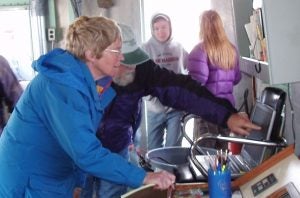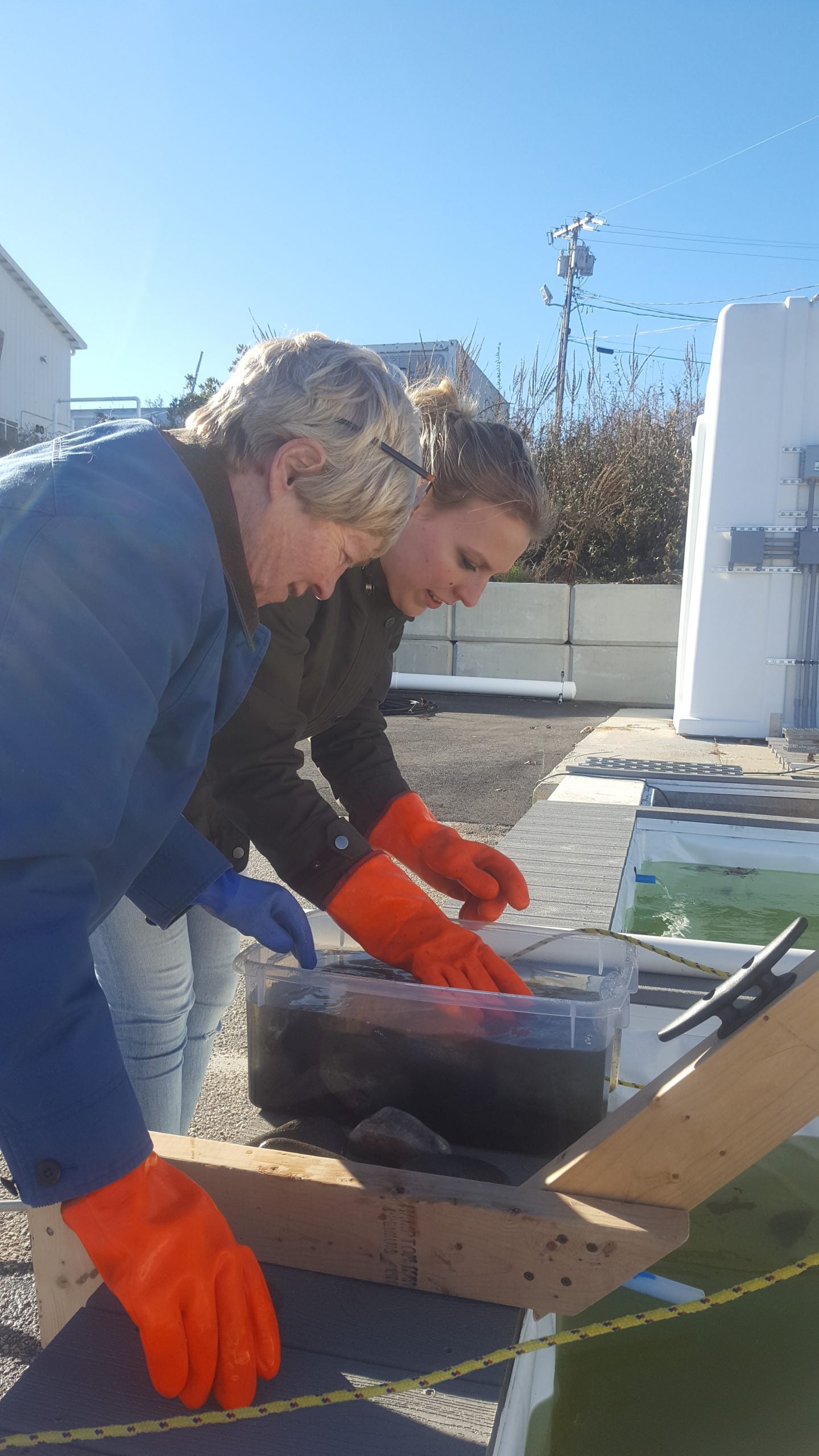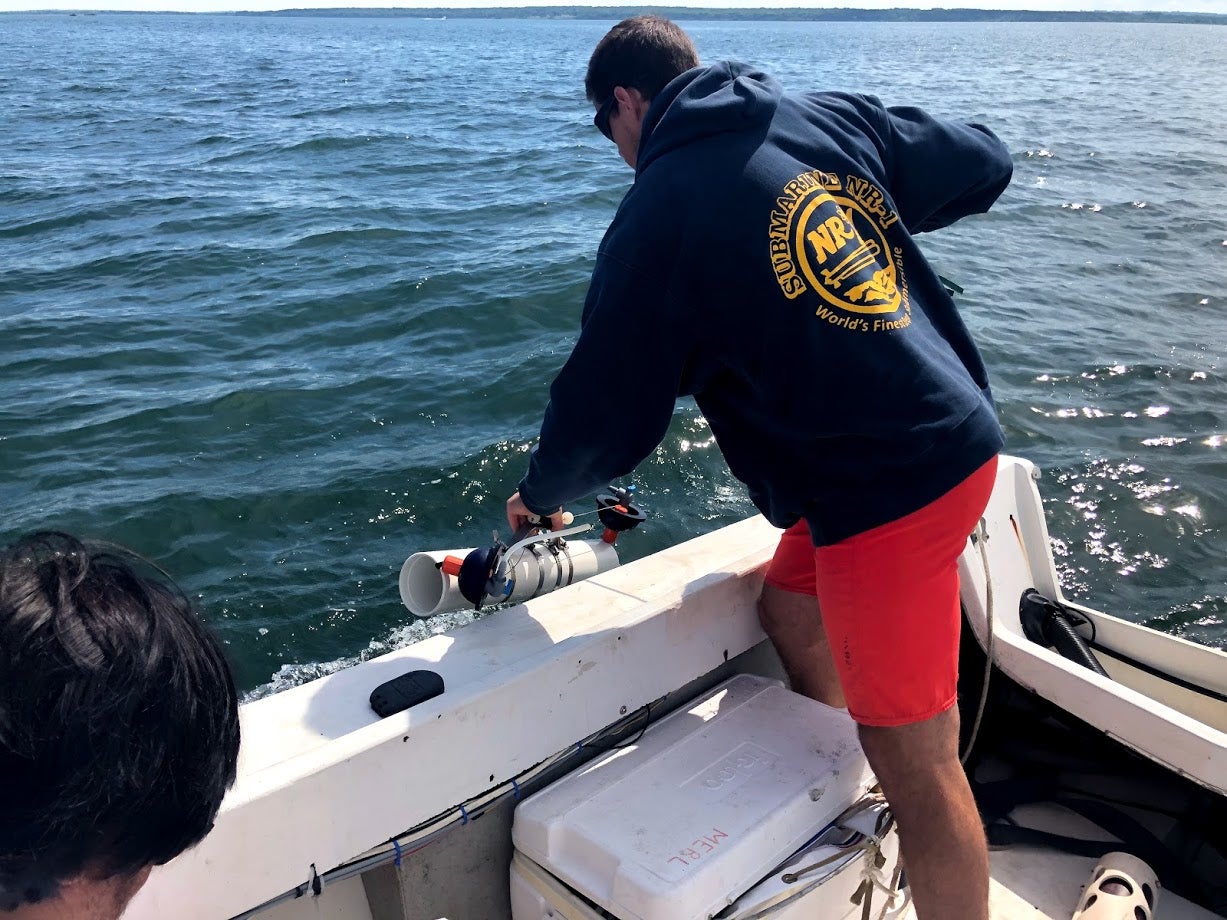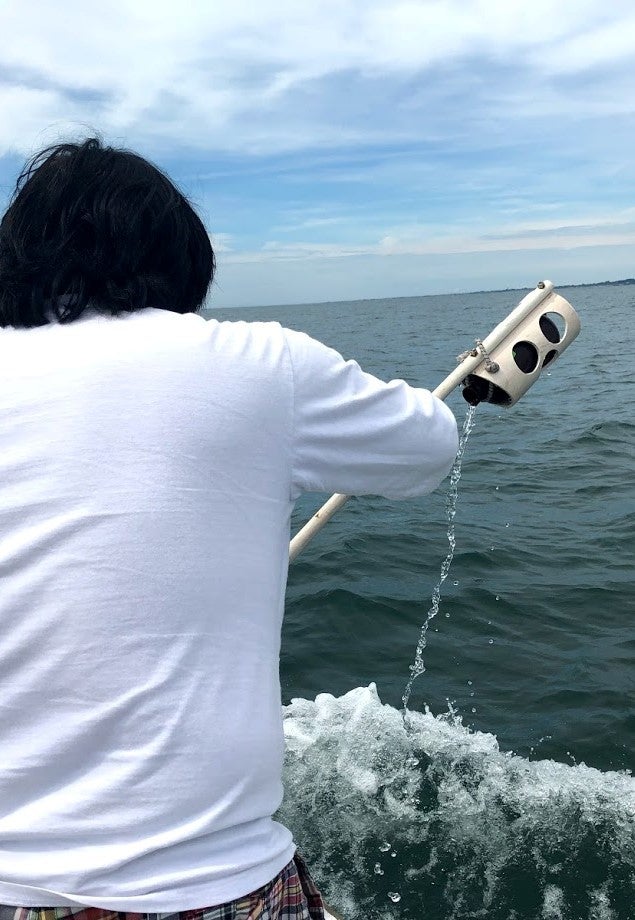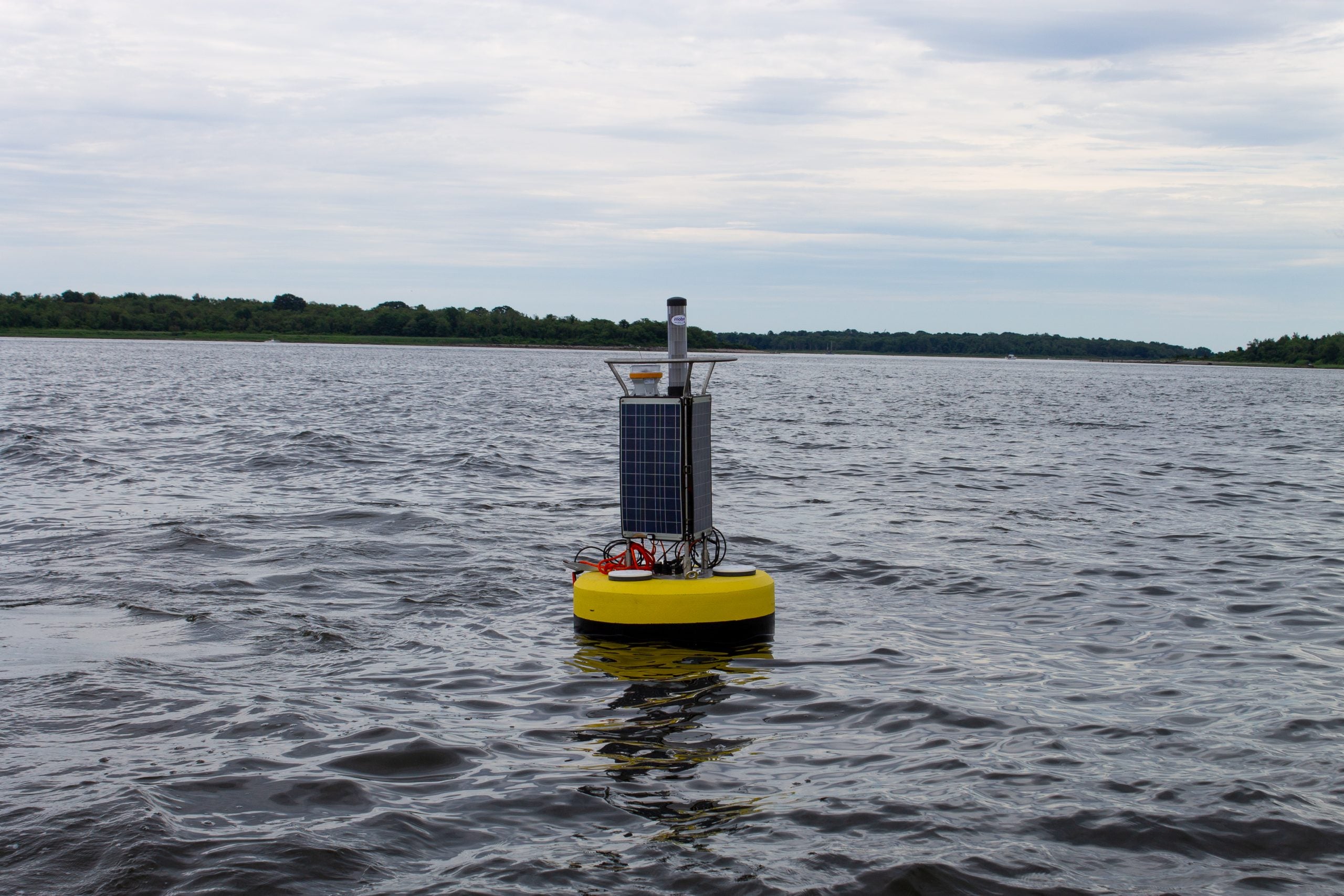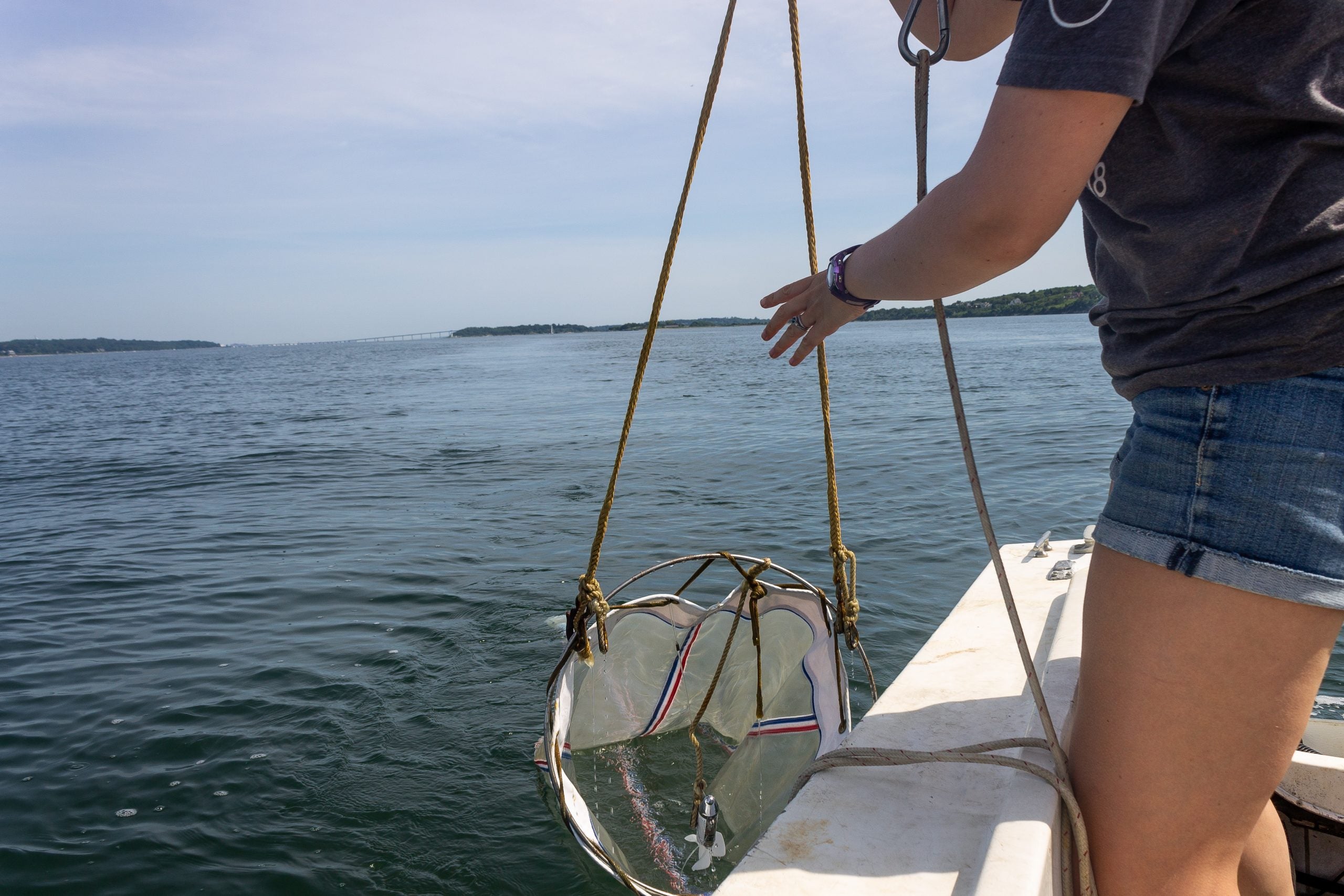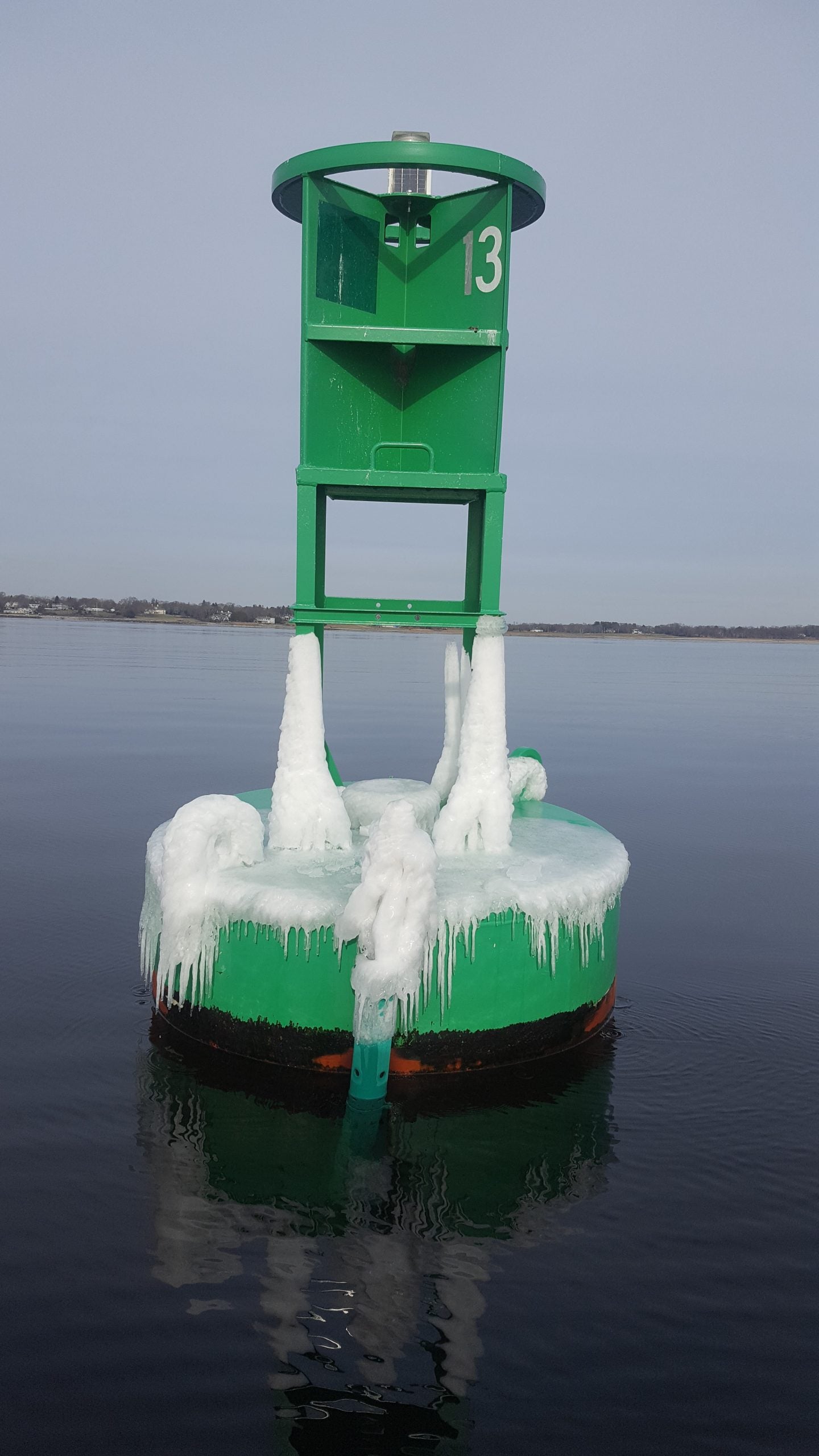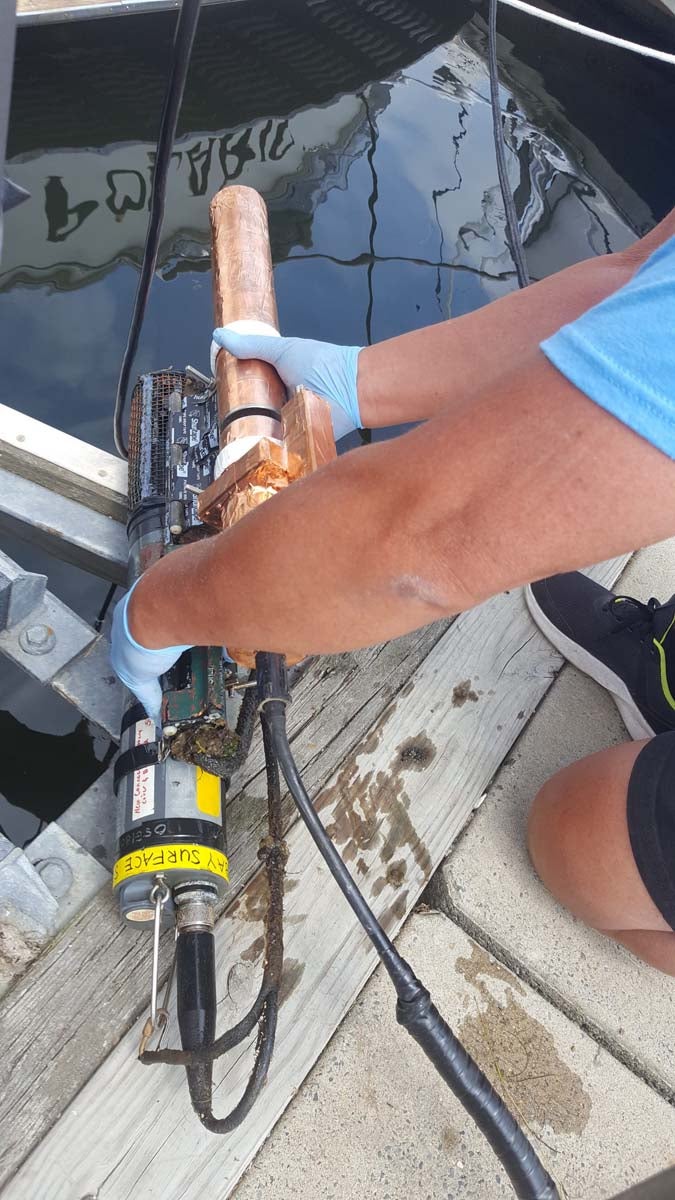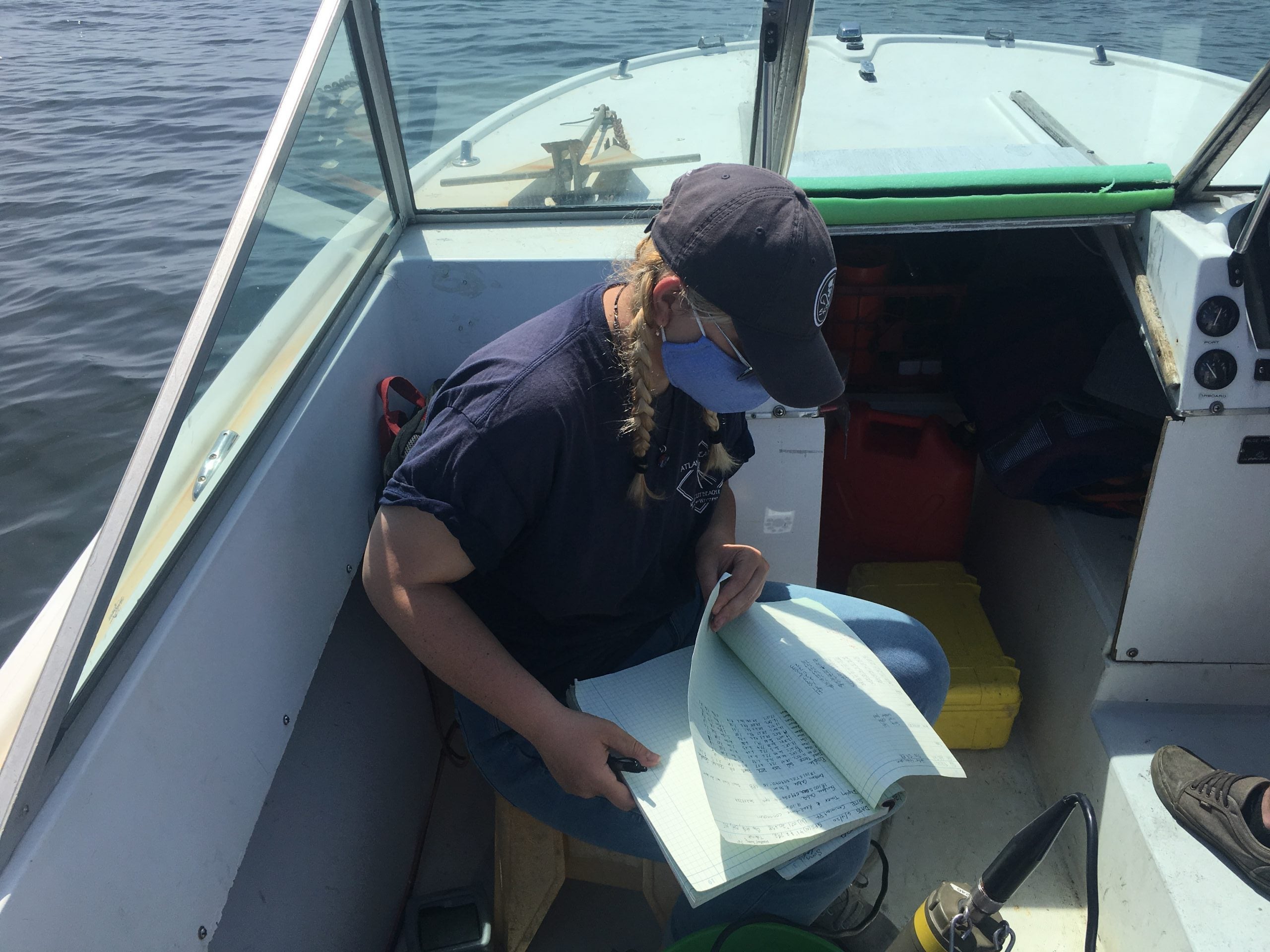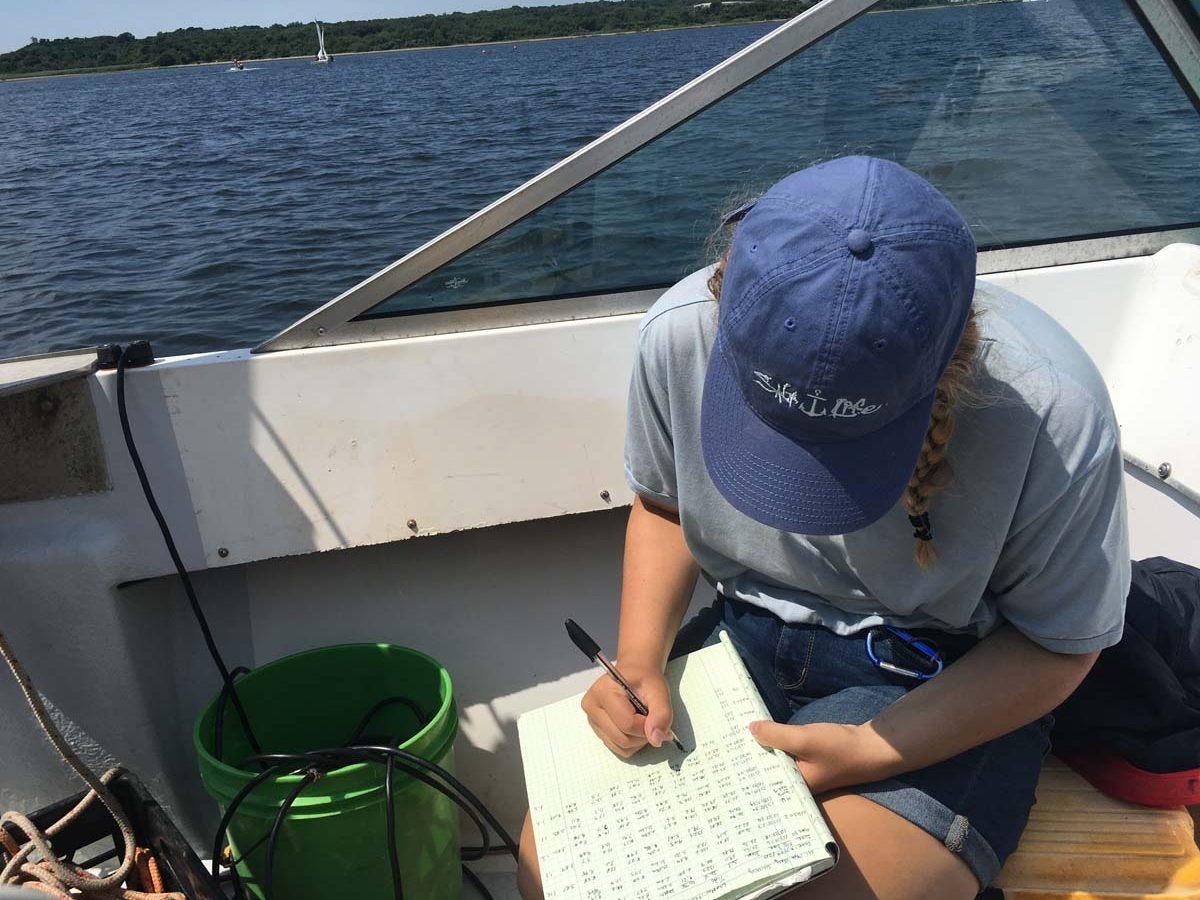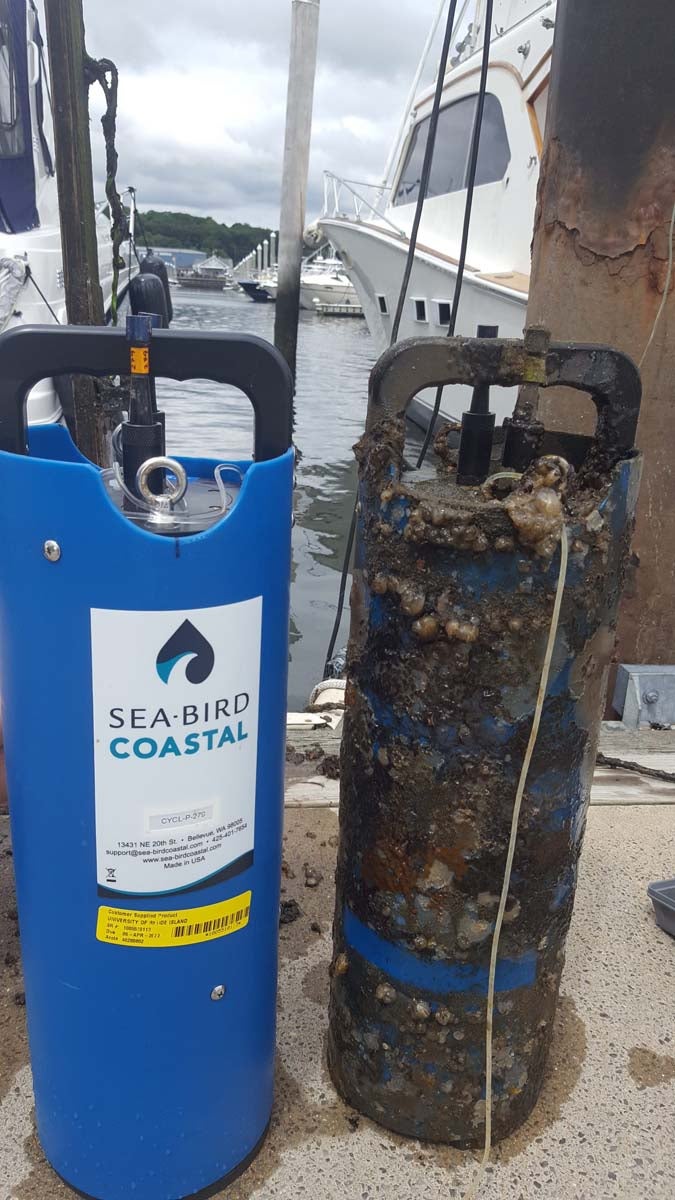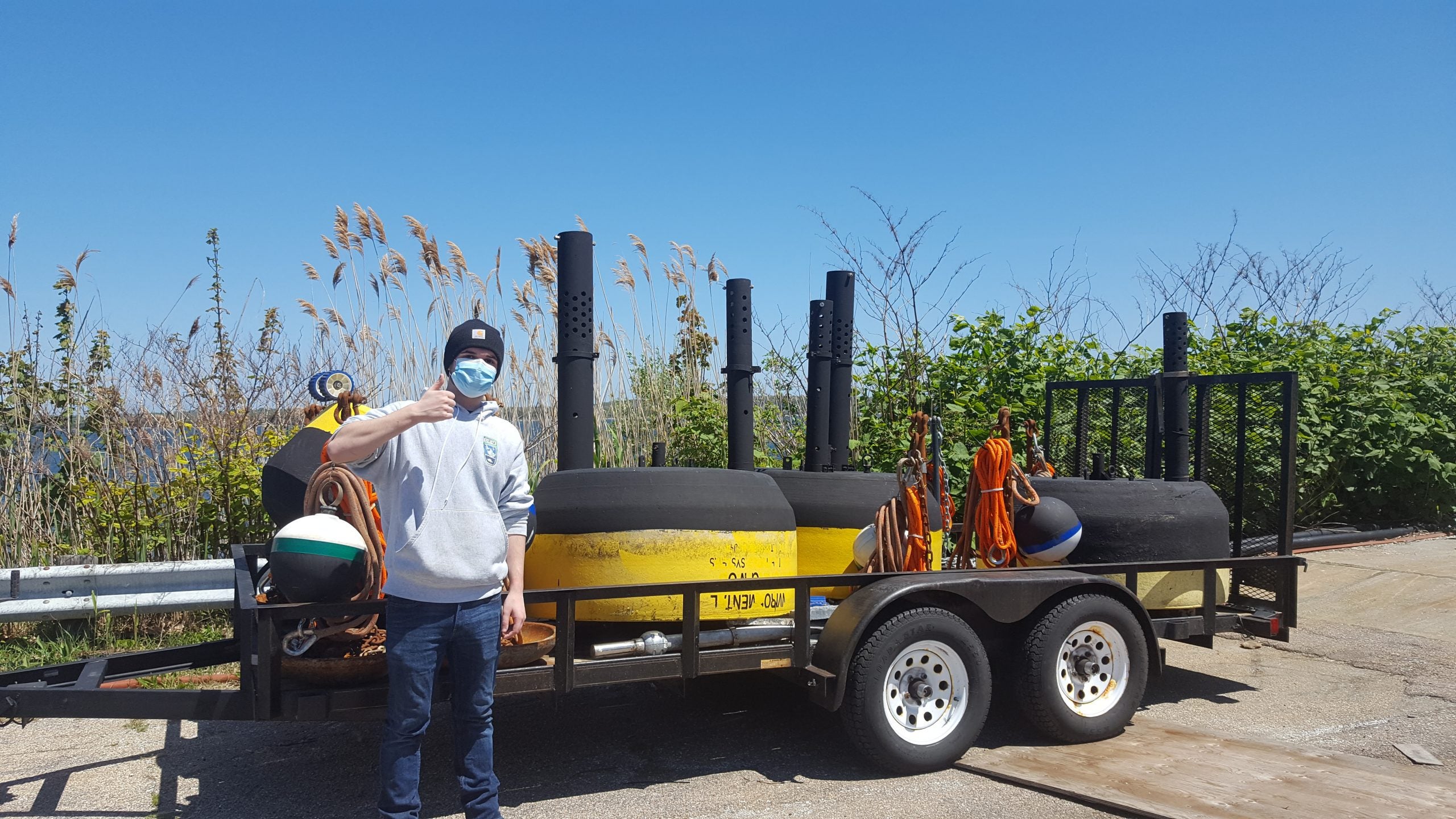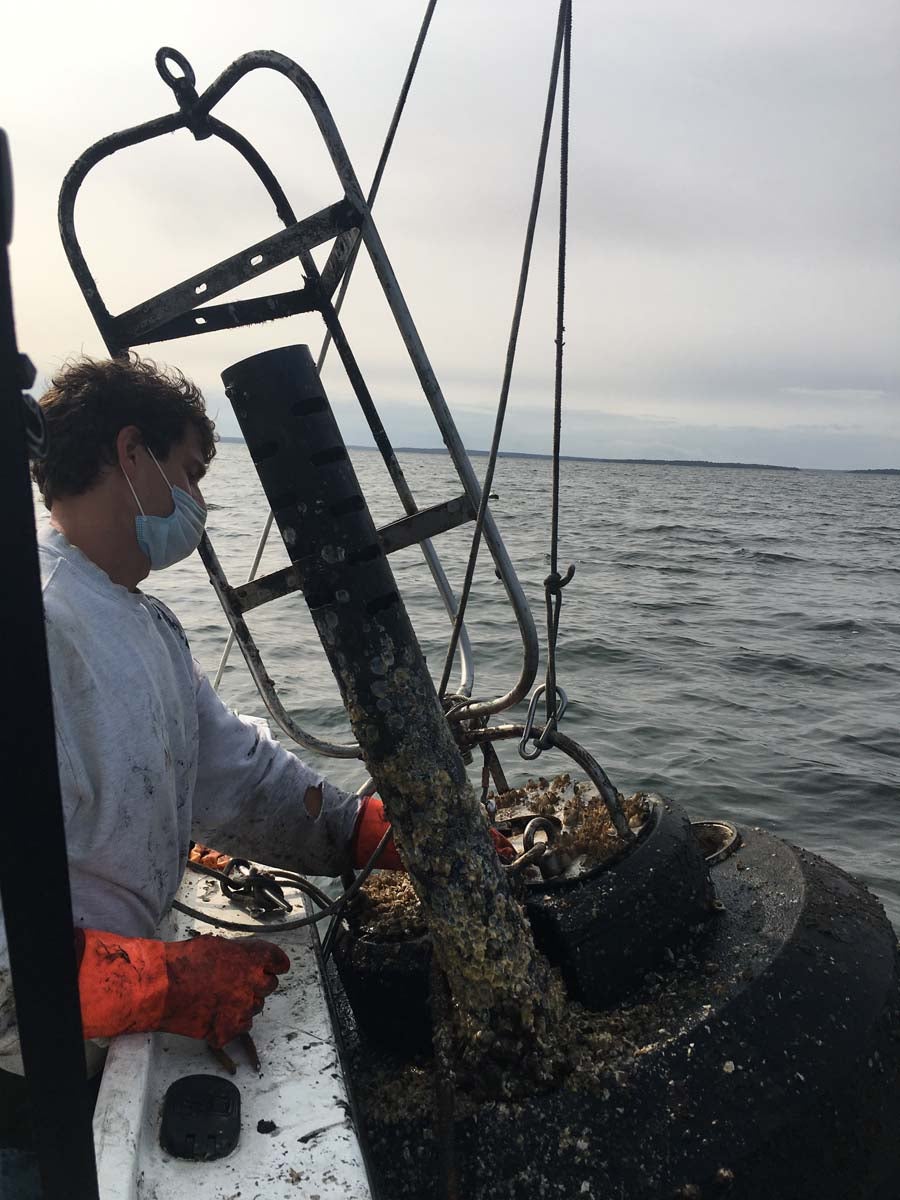MERL was established in 1976 with funding from the Environmental Protection Agency (EPA). In recent years, funding sources have diversified to include other federal and private agencies. The facility serves as a support laboratory and operations center for large experimental ecosystems. Four cylindrical enclosures, 1.8 m in diameter and 5.5 m in depth, are arranged along an access deck outside and adjacent to the building. The facility has laboratories for biology, water quality, and nutrient chemistry studies.
Over the last two decades numerous experiments have been conducted at MERL. Long-term experiments, often of a duration greater than one year, have been conducted to observe ecosystems under the influence of hydrocarbon, enhanced nutrients, different nutrient ratios, sewage sludge and effluent, polluted sediments, salinity gradients and stratification. Many short-term experiments have been conducted to observe the behavior of several individual hydrocarbons, trace metals and animal species, such as larval fish.
MERL Director
Long Term Monitoring and Current Projects
The Marine Ecosystem Research Laboratory (MERL, Graduate School of Oceanography, University of Rhode Island) specializes in whole system studies of estuaries and coastal waters. Our studies include water quality (2000-present: temperature, salinity, light, alkalinity, chlorophyll, oxygen, pH), nutrients (1976 and 2005 to present: ammonia, nitrite, nitrate, phosphate, total nitrogen, total phosphorus), winter-spring bloom limiting factors, primary productivity limiting nutrients and major faunal compartments such as benthos, bivalves, lobster and fish in areas such as Massachusetts Bay, Rhode Island Sound, and Narragansett Bay.
We have a long history of using experimental mesocosms, field sampling and fixed site and buoy network approaches. For over 20 years (1970s–1990s), we operated the MERL mesoscosms in eutrophication, climate and pollution studies for the Environmental Protection Agency. For the last two decades, (2001–Present) we have maintained and operated several water quality monitoring stations within the Narragansett Bay’s Fixed Site Monitoring Network through a partnership with the Rhode Island Department of Environmental Management’s Office of Water Resources. Currently, we are using the Sea Grant mesocosms in lobster and bivalve climate studies. Our long time series data sets (see datasets page) have become increasingly used to reveal water quality and climate trends in local waters. Our peer reviewed publications list contains over 100 papers devoted to these studies.
Our Facility
The following services are offered at the MERL facility:
- Analysis of dissolved and particulate nutrients with an Automated Analyzer (phosphate, nitrate, nitrite, ammonia, and silicate analyses)
- Chlorophyll extraction and analysis with a Turner Fluorometer
- Productivity measurements
- Total Suspended Solids (TSS) analysis
- LiCor water column light level profiling
- Benthic invertebrate identification and analysis
- Total Alkalinity (TA)
- In-Situ water quality profiling using YSI and Seabird brand equipment (temperature, salinity, dissolved oxygen, pH and CHL)

